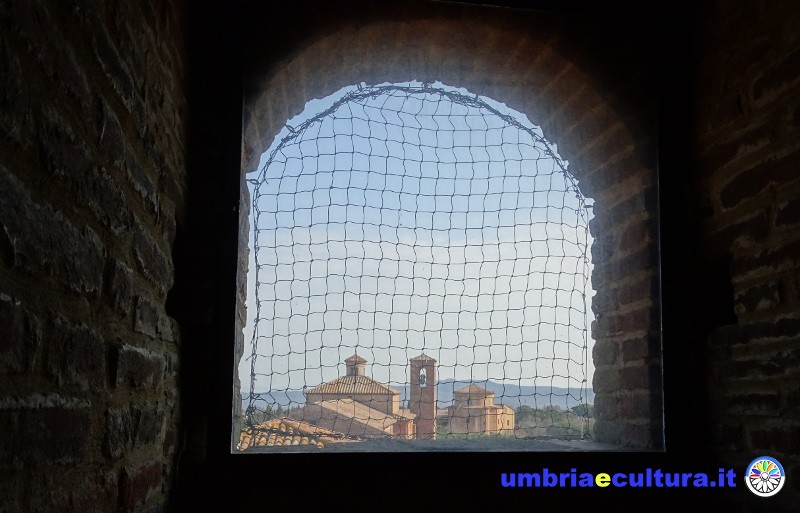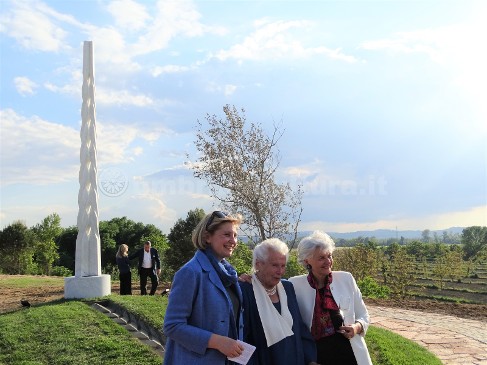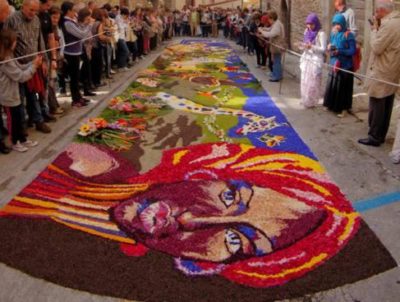Città della Pieve welcomes the visitor with the majestic Rocca Perugina, the fortification built by the hated Perugia that extended its dominion over these lands, as a symbol of dominion over the village. The mighty structure, despite the alterations, still marvels for its grandeur, and it is not difficult to imagine, wandering through its cells, the scene of the murder, by the unscrupulous Cesare Borgia, of the brothers Orsini and Michelozzo Vitelli, who here he accomplished, as Niccolò Machiavelli tells. Among cells, patrol walkways and a visit to the imposing towers, interesting workshops for all ages are also organized in the fortress according to the philosophy of “learning by doing”.
Città della Pieve also hosts the Oratory of Santa Maria dei Bianchi, where it’s possible to admire one of the masterpieces of Pietro Vannucci, who was born in this city: the splendid “Adorazione dei Magi”.
The Diocesan Civic Museum of Santa Maria dei Servi hosts contemporary art exhibitions next to an unusual, almost experimental Perugino, unfortunately arrived to us very damaged due to the changes undergone by the structure in the various eras, so that now the ancient church has a baroque style. Perugino’s work is a deposition performed in late age, where the artist tries, in some way, to update his iconography under the push of new solutions brought by young painters such as his greatest disciple, Raphael. In the crypt of the church, the objects, recently found in the Etruscan tomb of San Donnino, tomb of the Pulfna Peris family, are on display. Here it’s possible to admire three cinerary urns and two sarcophagi of the Pulfna Peris family, one of which is still sealed.
Also noteworthy is the Crucifixion painted inside the church of San Francesco, made in the second half of the 14th century by Jacopo di Mino del Pellicciaio. At the foot of the Cross, the Madonna, San Giovanni, Sant’Antonio, San Francesco, San Ludovico di Tolosa and San Bartolomeo. Expressive the faces of angels grieved by the death of the Lord give the work its popular name: “Weeping of angels”.
In Panicale it’spossible to visit the Kossuth Space, a place dedicated to contemporary art that was born as a tribute to the multifaceted personality of the master Wolfgang Alexander Kossuth and to the city he chose as a place of inspiration and artistic production.
You can get lost in the red brick streets of Città della Pieve to discover hidden corners or collect the suggestions of the 6 thematic itineraries proposed: Città della Pieve Full Town, City of Art and History, Città della Pieve and the Etruscans, Città della Pieve in the Renaissance and Città della Pieve between alleys and squares.
Find Città della Pieve on Google Maps:



